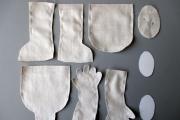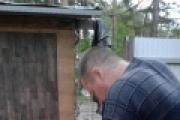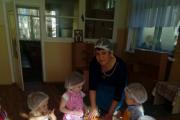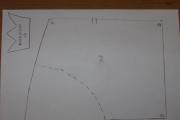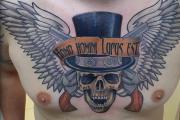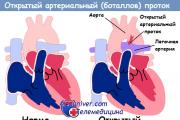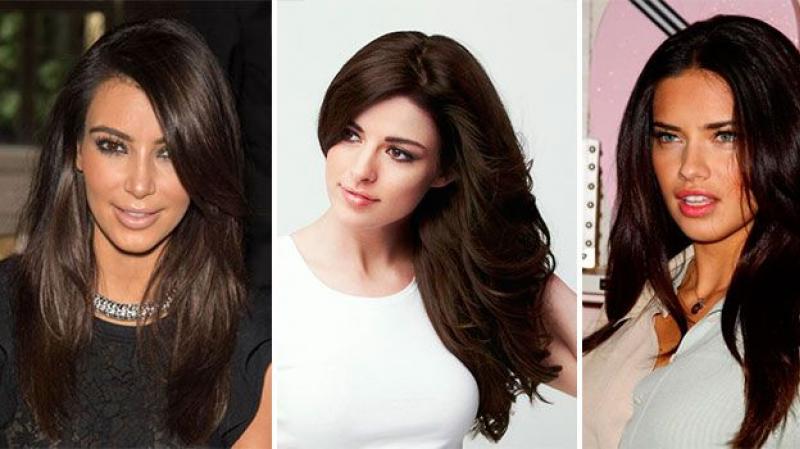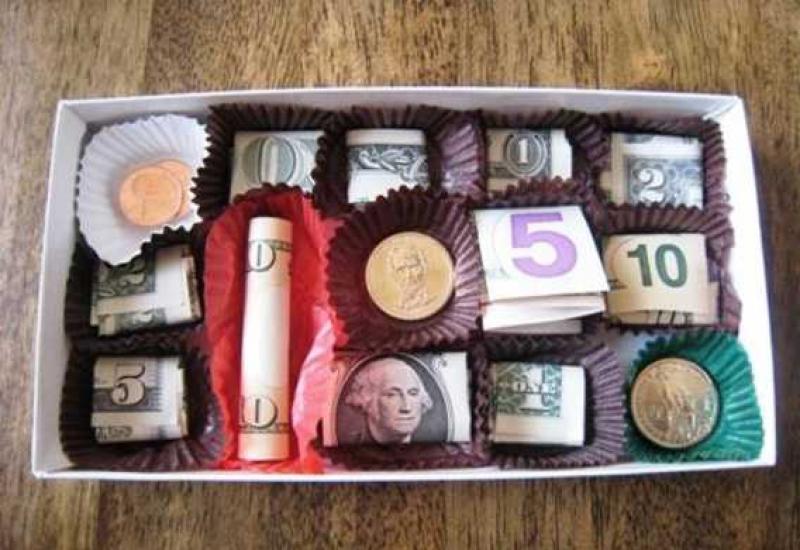Boulevard Ring. Why was the Kremlin ring isolated? Zemlyanoy Rampart and Wooden City
If you look at a map of the city until 2012, you can see that Moscow looks like a sun slightly elongated from north to south. Historically, a radial-ring layout developed here. But with each new urban plan, the city's boundaries changed.
History of the construction of Moscow: Moscow rings from to the Moscow Ring Road.
The bizarre pattern of alleys is a characteristic feature of Moscow. This is a feature of ancient cities, such as Tallinn and Tbilisi. In recently built cities we will not find this labyrinth (let us recall, for example, St. Petersburg or Odessa). This layout arose due to chaotic development and the abundance of small areas, to which narrow paths - “alleys” - were trampled and laid. Over time, they turned into alleys. But such an intricate system and curvature of the streets was also necessary for protection from enemies and fires.
The same plan formed the basis of the post-fire plan for Moscow in 1817, which radically changed the city. Neglinnaya was hidden in a pipe in the area from Trubnaya Square to the confluence with the Moscow River, and a city-forming ensemble of buildings appeared in the city center - and. At the same time, Bove proposed to complete the buildings inside the Kamer-Collezhsky Val to 6 floors and straighten the streets. And although his proposal was accepted, the project remained “on the shelf.”
At the same time, Alexander I ordered the reconstruction of Tsarskoye Selo V.I. to draw up a plan for post-fire Moscow. Geste. He didn’t know Moscow, but he prepared a plan. According to his proposal, the city was transformed into a French park with a central square-flowerbed - and radiant streets extending from it. The plan involved the demolition of many buildings and walls of Kitay-Gorod. But he was not accepted.
General plans for the development of Moscow in the 20th century.
Moscow received its next master plan only in Soviet times. In the 1920s, a special commission led by Ivan Zholtovsky and Alexei Shchusev developed the “New Moscow” project. It is based on the traditional radial-ring layout for the city and the principle of preserving the majority of ancient buildings. It was planned to use the Kremlin as a museum, and move the capital's public center to Petrovsky Park, give the city's silhouette a cone-shaped appearance, and build up the central part of Moscow with skyscrapers.
The project was considered unsatisfactory, and in 1931 a competition began to develop a new project. Its participants even offered fantastic ideas. For example, the French architect Le Corbusier expressed the idea of leaving only the Kremlin and Kitay-Gorod. Ernst May, the chief architect of Frankfurt am Main, proposed to resettle the entire city. According to his plan, the old capital retained only the functions of an administrative and business center, and it was surrounded by satellite cities with low-rise buildings. An adherent of rationalism, Nikolai Ladovsky, decided that the rings would not be able to cope with the growing load in the future, and proposed to open them. After this, the capital was supposed to take the shape of a parabola and in the future merge with Leningrad. His plan was called “Ladovsky’s Parabola”.
As a result, they chose the project of Vladimir Semenov and Sergei Chernyshev. The approved General Plan of 1935 recorded an increase in the number of inhabitants to 5 million people, and the territory doubled to 600 square kilometers. The designers fixed the main directions of expansion - to the southwest, east, west and northwest. The General Plan also included the idea of watering Moscow - a plan to create shipping routes. Moscow was supposed to be made similar to Venice.
The plan was only partially implemented, but many areas of the city were greatly rebuilt. All this time, Muscovites sent curses to the destroyers of historical Moscow, led by Lazar Kaganovich. He himself mercilessly criticized old Moscow: they say that the streets were laid not even by a drunken builder, but by a drunken shoemaker.
In the 1950s, Moscow had already “absorbed” former villages and estates and went beyond the boundaries of the Circular Railway. A new plan was needed. It was approved in 1971. The city was divided into 8 zones, and the old radial-ring street layout was supplemented with expressways. In addition, the construction of plants and factories was banned in Moscow and plans were made to extend the metro.
The 1935 concept of the "many-rayed sun" was replaced by the "seven-pointed star" (historic core and seven new centers). Also, the General Plan of 1971 recognized the further territorial growth of the city and its population as inappropriate. The forest park belt surrounding the capital was supposed to become the natural border of Moscow, but the growth of the city turned out to be more intense than planned. Already in the first half of the 1970s, the development of residential areas began in Chertanovo, Biryulyovo, Orekhovo-Borisovo, Teply Stan, Troparevo, Konkovo-Derevlevo, Tushino, Golyanov, Veshnyaki-Vladychin, Ivanovsky, and by the beginning of the 1980s, Moscow areas “stepped forward” outside the Moscow Ring Road: Mitino and Kurkino - in the north-west of the capital, Solntsevo - in the south-west, Butovo - in the south, Novokosino - in the east. Therefore, the 1971 plan was also only partially implemented.
The first post-Soviet master plan for Moscow was developed in the early 1990s and was adopted in 1999, and enshrined in law in 2005. Over the past 15 years, the center of Moscow and many districts have changed greatly due to the reconstruction and often demolition of historical buildings and other objects. Moscow authorities called this plan the “Master Plan of Opportunities.”
In 2007, the city's chief architect, Alexander Kuzmin, told reporters that Moscow was going to move away from "opportunities" and towards "necessities." The general plan of the city until 2025 was developed for more than three years and was adopted on May 5, 2010.
New Moscow.
In 2011 (after almost 10 years of disputes), the Moscow expansion project - New Moscow - was also adopted. This ambitious plan made it possible to increase the size of the city by 2.4 times by annexing the southern and southwestern territories of the Moscow region. The choice of this direction was not accidental: less than 250,000 people lived in this huge area.
New borders were established on July 1, 2011, and Moscow began to border the Kaluga region. And in society the innovations were criticized: the project was called “beneficial only for business”, and Moscow was called “Shanghai of a developing country”.
They say that......when Khrushchev reported to Stalin about the protests against the demolition of ancient buildings, he suggested: “You blow them up at night.” ...Luzhkov stole 20 centimeters of the Moscow Ring Road: when the road was widened, its asphalt shoulders were made 10 cm narrower on each side than planned. This made it possible to save a significant amount allegedly embezzled by Luzhkov. This conclusion was made on the basis of selective measurements. But after checking along the entire route, we found out that there were places of narrowing and widening. And the arithmetic mean according to control measurements was +4 cm. ...in the early 1990s, the Moscow Ring Road was called the “road of death” due to the large number of serious accidents. ...in connection with the expansion of Moscow, a joke appeared: “Hey, residents of South Butovo! Admit it, who made a wish for the New Year to live in the center of Moscow?”
In the history of urban planning, there are several basic principles of city planning: solar, grid, square-cluster and others. Which is better is not easy to say. But the layout of Moscow in the process of growth and development of the city was chosen by Muscovites themselves. This is the principle of a “sun city” with circular and diametrically diverging streets.
From the Kremlin to the Boulevard Ring
It is from the Kremlin that all the main streets diverge, forming a Kremlin ring, the streets of which make their way like rays through other rings: Boulevard, Sadovoe, and other modern transport rings, then rushing in all directions to distant cities of Russia.
Manezhnaya Square

Manezhnaya Square - formerly Manezhnaya Street and was laid in 1820, it received its name from the Manezh, a large building built according to the design of A. A. Betancourt in 1817.
China Town

Kitai-Gorod - in 1534, Veliky Posad (a settlement of traders and craftsmen) near the Kremlin was surrounded by a moat and fortifications made of wood and earth. According to one source, from Mongolian “medium fortress” (“China” in Mongolian means middle, “city” in Mongolian). Old Russian - fortress)
Varvarka

Varvarka Street - on this street in the 16th century the Church of Varvara and the Church of Maxim were built, in the 17th century - the Church of St. George and the Znamensky Monastery.
Nikolskaya

Nikolskaya Street - arose in the 13th century, connecting the Moscow Kremlin with Rostov the Great, Suzdal and Vladimir.
Znamenka

Znamenka Street takes its name from the Church of Our Lady of the Sign, known since 1600. In 1929 this temple was closed, and two years later it was destroyed.
Mokhovaya

Mokhovaya Street has been known since the 15th century, and it received its name in the 18th century from Mokhovaya Square (modern Manezhnaya), because here at that time peasants sold moss for caulking log houses.
Vozdvizhenka

Vozdvizhenka Street - in those centuries the street was called Orbat, which translated from Arabic means a suburb in front of the city, and was built up slowly.
Bolshaya Nikitskaya

Bolshaya Nikitskaya Street - this street was called in ancient times Polotsk and Novgorod - on the road leading from Novgorod through Volokolamsk to Moscow.
Tverskaya

Tverskaya Street - in the 15th century, a wooden bridge was built opposite Istorichesky Proezd, connecting the road from Tver to Moscow in a straight line. In the same century, the road to Tver merged with the road to Veliky Novgorod, and this street became the main street of Moscow.
Neglinnaya

Neglinnaya Street - until 1922 it was Neglinnaya Proezd, connecting Teatralny Proezd and Trubnaya Square on the boulevard ring; the street (at that time a passage) appeared in the 1820s after the Neglinnaya River was enclosed in an underground pipe.
Rozhdestvenka

Rozhdestvenka Street - appeared in the 14th century and connected the Nativity nunnery founded at that time with the city center.
Myasnitskaya

Myasnitskaya Street - once started from the Ilyinsky Gate of Kitay-Gorod, made a sharp turn to the left, walked along Luchnikov Lane... Only in the 18th century Myasnitskaya Street acquired its modern geometry.
Maroseyka

Maroseyka Street is a continuation of Ilyinka and is located between Lubyansky Proezd and Pokrovsky Gate. In the 15th - 16th centuries, gardens bloomed here and the country courtyards of Ivan III and Vasily III stood here.
Solyanka

Solyanka Street - in the 17th - 19th centuries, on the corner of Solyanka there was a Solyanka yard, hence the name of the street.
Streets around the Kremlin. How the first streets of Moscow appeared

The year 1147 is considered to be the year of the founding of Moscow. It is this date that appears in the chronicle in connection with the first mention of Moscow and Prince Yuri Dolgoruky. Although trade and craft settlements near the Moscow River existed long before that.
Yuri Dolgoruky is called the founder of the city, because under his rule the appearance of Moscow as a city was laid - with the Kremlin, Red Square, which in those distant times was called Pozhar, and Kitay-Gorod. The place of foundation of Moscow is the former estate of the boyar Kuchka, which was located near the current Sretensky Gate. In 1156, the first Kremlin was built - still made of wood, often suffering from fires and lasting for almost three centuries. The streets on the territory of the ancient Kremlin were nameless, and there were many more of them. Steep, winding alleys skirted the courtyards of the nobility, led to monasteries and churches, and descended from Borovitsky Hill to Podol.
At the beginning of the 16th century, after a new fortress was built under Ivan III, the basic principle of the formation of the city was laid down - sun-shaped, with ray-shaped streets diverging from the Kremlin.

The oldest streets were built from wooden flooring, but a little later, at the turn of the 16th-17th centuries, the streets began to be paved with cobblestones. The very first street of Moscow was called Velikaya, or Bolshoi. Great - not because there was anything majestic about her, but simply because she was big, simply huge for that time. The Great Stretched from the Kremlin along the Moscow River all the way to the Church of the Conception of St. Anna, in the very place where the Rossiya Hotel is now located.
The next street was formed on the site of the road that led from the Kremlin towards Rostov, Vladimir and Suzdal. This is Nikolskaya Street, named after the St. Nicholas the Old Monastery located on it. Although in the description of the Kremlin in 1626 this street was nameless and was simply called the road leading to the Nikolsky Gate.
Chudov Lane was also famous in those days. It ran behind the Chudov and Ascension monasteries.
The intersection of Nikolskaya and Chudov Lane was called Nikolsky “sacrum”. Another ancient street leading from the Trinity Gate led to the same intersection. Its name has not been preserved.

Two more streets are known from ancient chronicles and descriptions of the Kremlin and Kitai-Gorod: Ilyinka and Varvarka. They also led from the Kremlin and stretched across the entire Kitay-Gorod. Ilyinka was named after the Church of Elijah the Prophet. It was a street of merchants and bankers. It ended at the Ilyinsky Gate, where in 1887 a chapel-monument was erected in honor of the heroes of Plevna.
And on Varvarka there was the most famous Gostiny Dvor of those days, where merchants, diplomats and travelers stayed.
A little later, streets leading to the main cities of the principality appeared: Serpukhovskaya, Tverskaya, Smolenskaya.

The chaotic interweaving of streets and alleys in the old part of Moscow is explained by the fact that settlements grew around the Kremlin, as the main defensive structure. Slobodas were formed along professional lines. They were often inhabited by people of only one profession. It was the settlements that served as the basis for the creation of city districts. And their names can still be guessed in the names of the streets: Myasnitskaya, Serebryanicheskaya, Kotelnaya.
These are the first streets of Moscow, information about which has survived to this day.
One of the main highways (ring “A”) in the center of Moscow, passing along the historically established city limits, on the site of a dismantled wall. Having emerged at the end of the 18th and beginning of the 19th centuries, the Boulevard Ring stretches for more than 9 km, preserving... ... Moscow (encyclopedia)
Boulevard Ring- Boulevard Ring o (in Moscow) ... Russian spelling dictionary
Moscow Boulevard Ring on the atlas of A. Khotev, 1853 ... Wikipedia
This term has other meanings, see Boulevard Ring (meanings) ... Wikipedia
Boulevard Ring: The Boulevard Ring is a sequence of ten streets (boulevards) in the center of Moscow. Boulevard Ring urban planning ensemble in Riga (Latvia) ... Wikipedia
Moscow Third Ring in the area of Berezhkovskaya Embankment ... Wikipedia
This article or part of an article contains information about expected events. Events that have not yet occurred are described here... Wikipedia
The fourth transport ring is a motor road in Moscow. Work on the construction of the Fourth Transport Ring and the northern and southern roads in Moscow is in full swing. The city authorities hope that the emergence of these new highways will significantly... ... Wikipedia
Lukino station. Old platform... Wikipedia
- (MK MZD) (Moscow Circular Railway (MOZD), Small Moscow Ring (MMK)) circular railway in Moscow, designed for freight transportation between all 10 main railway directions... ... Wikipedia
Books
- Boulevard Ring. Guide (2CDmp3), King Z. Category: Other Series: Audio tour Publisher: 1C, audiobook
- Boulevard Ring. Guidebook (MP3 audiobook on 2 CDs), Z. Korol, Guidebook is the most convenient and affordable way to get to know the city. Virtual trip on a personal computer: photographs, descriptions of routes, the ability to study and print... Category: Moscow. Guides and reference books Publisher: 1C-Publishing, audiobook
- Boulevard Ring, Larisa Skrypnik, An unforgettable walk along the picturesque Moscow Boulevard Ring awaits readers of this book. It introduces the features, history, legends and traditions of ten famous boulevards... Category:
The rings of Moscow, which form the basis of the radial-ring development of the city, took shape over many years. A similar layout, which is also called a branch-fan layout, is found in many European cities, in particular, Paris and Vienna are built according to this pattern.
The radial-ring principle of construction was used in those Russian cities that were both large trade and transport centers and important military installations.
The positive side of radial-ring urban development is compactness, the possibility of city growth in all directions and ease of movement around the city. The most important disadvantages, one of which Moscow is now fully experiencing, is the forced overload of the roadway in the center.
The rings did not appear in Moscow right away. Like the first wooden Kremlin, the stone one built by Ivan Kalita had a triangle in plan, located between the Neglinnaya and Moscow rivers. A small trading city, such as Moscow was in ancient times, did not need, and did not have much opportunity to deal with obstacles on the path to growth. In addition, rivers served as natural barriers during enemy attacks. For a long time, the city was built in the eastern, safer direction, where, again, under Ivan Kalita, the walls of Kitay-Gorod grew in the 16th century.
But the time came when Moscow crossed both rivers, and the city’s borders gradually began to round off. The first ring of Moscow can be called the configuration formed by the walls of the White City. This ring was not closed - it was interrupted by the Moscow River. A century and a half later, on the site of the demolished walls of the White City, alleys will be laid, trees will be planted, and a Boulevard Ring will appear in Moscow, which has survived to this day.
The very first closed ring was formed by the walls of the Zemlyanoy City. This fortification structure stepped beyond the Moscow River, including the territory of Zamoskvorechye. Nowadays, on the site of the walls of Zemlyanoy City, the Garden Ring has been laid, which until the first quarter of the 20th century was considered the boundaries of the urban territory of Moscow.
The third ring in Moscow was Kamer-Kollezhsky Val. It was no longer a defensive structure, but a customs border. The shaft was built in the mid-18th century in order to separate the territory belonging to farmers who had the right to sell alcoholic beverages within Moscow. The ring was precisely irregular in shape and reached approximately 37 kilometers in length. On the northwestern and southwestern sides, the borders of the ring approached the city center, and in the northeast they moved away from it, covering Preobrazhenskoye and Lefortovo. Despite the fact that Kamer-Kollezhsky Val actually became a new city feature, this was not officially recognized for a long time.
By 1917, another ring appeared around Moscow - the Circular Railway. At that time, this structure did not quite correspond to the borders of Moscow, and did not participate in the city movement in any way, but in 1917 it was officially recognized as a new city feature of Moscow.
After the revolution of 1917, the new Moscow authorities forgot about this decision, and only in the 30s, when the General Plan for the Development and Reconstruction of Moscow was developed, did they remember the rings again. In accordance with the plan, it was supposed to preserve the historical buildings of the city, incorporating modern elements in the form of straight long avenues. As part of the implementation of the Plan, a semi-circle was built along the Kremlin and Kitay-Gorod. The semicircle consisted of avenues, and at the junctions there were squares. It was then that the Garden Ring was expanded and landscaped, and the first transport interchanges appeared. At the same time, work began on the construction of the Third and Park Rings, but the Great Patriotic War of 1941 interrupted them for a long time.
The next ring in Moscow was the Moscow Ring Road - MKAD for short. This expressway was built in the mid-50s of the 20th century in order to bring transit transport outside Moscow. The length of the ring was 109 meters, all road intersections were built at different levels. Nowadays, the Moscow Ring Road is a full-fledged participant in intracity traffic, and the borders of Moscow have stepped beyond its borders, but for 25 years this ring served as the administrative border of Moscow. In the tourism sector, there is such a thing as the Golden Ring of Moscow. This route includes the boulevards and squares of the old center of Moscow, as well as all attractions located within these boundaries.
Ivan Terenin
Sergey Firsanov
all 2
Five rings of Moscow- an annual multi-day road cycling race held in Moscow in early May. It is considered the successor to the Garden Ring bicycle race, which was first held in 1920. In 1993, the race became international and is currently included in the stage races of the second category (class 2.2) of the UCI Europe Tour.
As the name implies, the routes of all stages of the race are rings. Over the years, these were: the ring around the Kremlin (“Kremlin Ring”), the ring of the Olympic route in Krylatskoye (“Krylatskoye Ring”), the Garden Ring, the ring on Vorobyovy Gory (“Vorobyovy Ring”), the ring along Luzhnetskaya Embankment (“Luzhnetskoye Ring”) ").
The first stage is a prologue, an individual race with a time trial. The remaining stages are group races with a mass start. The last stage is the “Garden Ring”, traditionally held on May 9, Victory Day.
By analogy with the Tour de France and other major races, colored jerseys are awarded at the Five Rings: yellow is the leader’s jersey, purple is the most stable rider’s jersey, etc.
Winners
|
|
Write a review about the article "Five Rings of Moscow"
Notes
Links
- at cyclingarchives.com
- on fvsr.ru (since 2008)
| “This is Marie and there is no need to take her out: the suitors are coming to us themselves,” the little princess said carelessly when she heard about this. Prince Nikolai Andreich winced and said nothing. Two weeks after receiving the letter, in the evening, Prince Vasily’s people arrived ahead, and the next day he and his son arrived. Old Bolkonsky always had a low opinion of the character of Prince Vasily, and even more so recently, when Prince Vasily, during the new reigns under Paul and Alexander, went far in rank and honor. Now, from the hints of the letter and the little princess, he understood what was the matter, and the low opinion of Prince Vasily turned in the soul of Prince Nikolai Andreich into a feeling of malevolent contempt. He snorted constantly when talking about him. On the day Prince Vasily arrived, Prince Nikolai Andreich was especially dissatisfied and out of sorts. Was it because he was out of sorts that Prince Vasily was coming, or because he was especially dissatisfied with the arrival of Prince Vasily because he was out of sorts; but he was not in a good mood, and Tikhon in the morning advised against the architect coming in with a report to the prince. “Can you hear how he walks,” said Tikhon, drawing the architect’s attention to the sounds of the prince’s steps. - He steps on his entire heel - we already know... However, as usual, at 9 o'clock the prince went out for a walk in his velvet fur coat with a sable collar and the same hat. It snowed the day before. The path along which Prince Nikolai Andreich walked to the greenhouse was cleared, traces of a broom were visible in the scattered snow, and a shovel was stuck into the loose mound of snow that ran on both sides of the path. The prince walked through the greenhouses, through the courtyards and buildings, frowning and silent. - Is it possible to ride in a sleigh? - he asked the venerable man who accompanied him to the house, similar in face and manners to the owner and manager. - The snow is deep, your Excellency. I already ordered it to be scattered according to the plan. The prince bowed his head and walked up to the porch. “Thank you, Lord,” thought the manager, “a cloud has passed!” “It was difficult to get through, your Excellency,” added the manager. - How did you hear, your Excellency, that the minister will come to your Excellency? The prince turned to the manager and stared at him with frowning eyes. - What? Minister? Which minister? Who ordered? – he spoke in his shrill, harsh voice. “They didn’t clear it for the princess, my daughter, but for the minister!” I have no ministers! - Your Excellency, I thought... - You thought! - the prince shouted, pronouncing the words more and more hastily and incoherently. – You thought... Robbers! scoundrels! “I will teach you to believe,” and, raising a stick, he swung it at Alpatych and would have hit him if the manager had not involuntarily deviated from the blow. - I thought so! Scoundrels! – he shouted hastily. But, despite the fact that Alpatych, himself frightened by his audacity to evade the blow, approached the prince, obediently lowering his bald head in front of him, or maybe that’s why the prince continued to shout: “scoundrels! throw up the road! He didn’t pick up his stick another time and ran into the rooms. |


